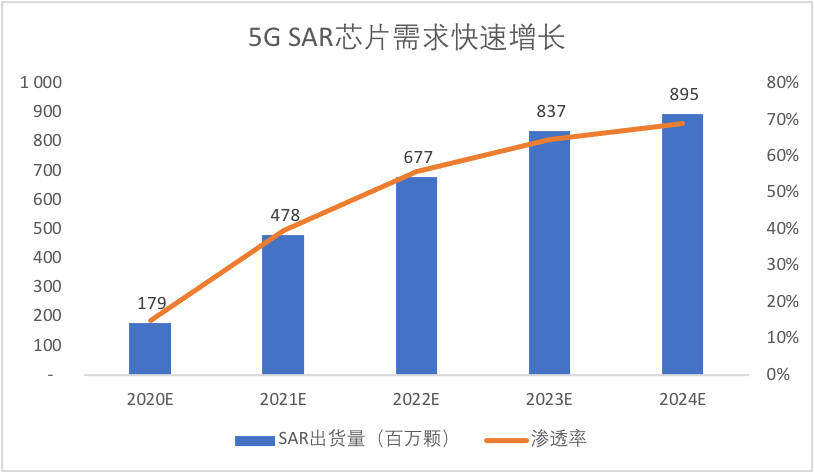Smart + perception of the chip will be widely used in personal consumer electronics and the Internet of Things
Author: Plum month
Editor: Shi Yaqiong
**
It is learned that Xihua Technology recently completed a pre-A round of financing of tens of millions of RMB led by Tsinghua Power and Xiamen Hefang.
Xihua Technology was established at the end of 2018, headquartered in Shenzhen, with R&D centers in Shanghai and Beijing, focusing on the use of intelligent perception and computing control to achieve edge intelligence. The CEO of the company graduated from Tsinghua University, and the team mostly comes from internationally renowned chip design companies, with software, hardware, algorithm, system, verification and other chip development capabilities across the entire chain. Team members account for 65% of the master’s and doctoral degrees. The company has R&D and mass production experience in the fields of human-computer interaction, mixed signal processing, and large-scale SoC. Many products designed by the team’s history have won international awards, and the shipments of the designed chips are billions. The company was founded 2 years ago, and has nearly 150 patents, of which 1/3 are invention patents.
Siwa has a multi-modal Sparrow architecture platform similar to CortexM. Research and planning projects based on the Sparrow platform include 3D face recognition vision chips, binocular vision chips, intelligent decoding Scaler chips, MCU+ perception/drive series chips, etc. The Sparrow platform is highly integrated with the control part of the RISC-V processor, the computing part of the AI accelerator and image algorithm accelerator, the sensing part of the Sensor hub, touch, fingerprint, IR and other human-computer interaction modules, and the security part reaches EAL4+ and national The high-level security encryption module of the secret standard, the ultra-high-speed system data architecture and the ultra-low power consumption module, the rich interface types, etc., can quickly derive products and greatly shorten the product launch cycle. Based on the Sparrow platform, currently three types of chips are mainly developed, 5G SAR chip, TWS Touch chip and intelligent decoding Scaler chip.
(Edge AI chip architecture: Sparrow platform Image source: Interview for image)
5G SAR (Specific Absorption Rate) is used to measure the impact of mobile phone radiation on the human body. When the phone is detected close to a personAppropriately reduce or adjust the antenna transmit power during body time to reduce radiation. Xihua predicts that with the popularization of 5G mobile phones and stricter implementation of standards (see the national standard for electromagnetic radiation exposure limits for mobile phones GB21288-2020), excluding Apple’s consumption, the SAR chip market will reach nearly 200 million units in 2020, and it will still be in the next few years. Will continue to grow, especially after China’s SAR standard is enforced, it will usher in explosive growth. Each 5G mobile phone requires 2-3 SAR chips, which is higher than the demand for 4G mobile phones. At present, more than 80% of the market share is monopolized by Semtech of the United States, and similar companies include South Korea’s Abov. Xihua said that its 5G SAR chip has ultra-high-precision capacitance change detection, ultra-long detection distance, wide load detection range, temperature compensation technology, intelligent identification and ultra-low power consumption. The sensitivity and detection distance are 60 higher than competing products. %, the load capacity is more than 60% higher than the international leading competitors, and the anti-interference frequency band is more than 60% higher than the international leading competitors, which can completely realize import substitution.
(5G SAR demand growth Image source: Interview courtesy)
The TWS Touch chip combines the in-ear detection function with the touch control function. It is expected to be available at the end of 2020, and Alpha customers have been confirmed. Xihua said that compared with the traditional light sensing + Gsensor solution, TWS Touch does not require openings, has high integration, small size, low power consumption and good touch experience. Since the release of Airpods in 2016, wireless smart headsets have grown rapidly, and Xihua expects to exceed 1 billion in 2023. At the same time, with the exception of Apple, most of the TWS headset purchasing decision makers and users are in mainland China, so there is a high chance of import substitution.
(TWS Touch chip requirements Image source: Interview courtesy)
Xihua said that the current sales are about tens of millions of yuan and will reach a balance of payments within this year.
Co-founder of Xihua Technology&C


